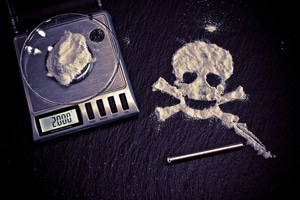
September 30, 2019
A Look At Substance Use Disorder
By Michael D. Shaw
According to the World Health Organization:
“Substance abuse refers to the harmful or hazardous use of psychoactive substances, including alcohol and illicit drugs. Psychoactive substance use can lead to dependence syndrome—a cluster of behavioral, cognitive, and physiological phenomena that develop after repeated substance use and that typically include a strong desire to take the drug, difficulties in controlling its use, persisting in its use despite harmful consequences, a higher priority given to drug use than to other activities and obligations, increased tolerance, and sometimes a physical withdrawal state.”
Let’s turn to the National Survey on Drug Use and Health to get a handle on the problem, with some findings from its Key Substance Use and Mental Health Indicators in the United States: Results from the 2016 National Survey on Drug Use and Health report published in September, 2017. (All data refers to people aged 12 or older.)
- Even though cigarette use has declined, 51.3 million were current cigarette smokers. Of these, 12.2 million smoked approximately a pack or more of cigarettes per day.
- 136.7 million reported current use of alcohol, including 65.3 million who reported binge alcohol use in the past month and 16.3 million who reported heavy alcohol use in the past month.
- 28.6 million people used an illicit drug in the past 30 days. 24.0 million were current marijuana users and 3.3 million were current misusers of prescription pain relievers. Other substances tracked include cocaine, hallucinogens, methamphetamine, inhalants, heroin, prescription tranquilizers, stimulants, and sedatives.
The Addiction Center referral service ranks the ten most common addictions (US statistics):
1. Tobacco (nicotine)—Over 40 Million. Legal, readily available, and causes the most deaths.
2. Alcohol—18 Million. Besides its potential to cause illness to the abuser, thousands of fatalities each year due to driving while intoxicated.
3. Marijuana—4.2 Million. Despite its social acceptance, can be addictive.
4. Painkillers—1.8 Million. e.g. codeine, Vicodin and Oxycontin.
5. Cocaine—821,000. Addiction rates declining, but still a big problem, especially with crack.
6. Heroin—426,000. Notorious for withdrawal problems. Abuse is growing, among young women in particular.
7. Benzodiazepines—400,000. “Benzos” e.g. Valium, Xanax, Diazepam and Klonopin. Medical supervision necessary during detox.
8. Stimulants—329,000. e.g. Adderall, Ritalin, and methamphetamine.
9. Inhalants—140,000. All these substances can be quite toxic, with immediate health effects in some cases.
10. Sedatives (barbiturates)—78,000. e.g. Lunesta, Ambien, and others. Continued use can produce tolerance and addiction.
Now that we’ve described the problem, let’s move on to how substance use disorder (aka drug addiction) is treated. In January, 2018, the National Institute on Drug Abuse published Principles of Drug Addiction Treatment: A Research-Based Guide (Third Edition). This widely disseminated work starts off by stating that “Drug addiction is a complex illness,” and notes further on that “Because drug abuse and addiction have so many dimensions and disrupt so many aspects of an individual’s life, treatment is not simple. Effective treatment programs typically incorporate many components, each directed to a particular aspect of the illness and its consequences.”
Drug treatment can include behavioral therapy (such as cognitive-behavioral therapy or contingency management), medications, or their combination. Ideally, treatment should be adjusted to meet the needs of the patients, and is usually also based on the specific drugs they abuse. In some circles, though, there still seems to be a tension between behavioral therapy and medication-assisted treatment (MAT).
Since the behavioral approach came first, there was a tendency to belittle MAT, which originated in the 1970s. A common argument was “Why substitute one addiction for another?”—even if this question was nearly always stated rhetorically. In fact, there is a very good reason to do so: Harm Reduction. Drugs such as methadone relieve narcotic craving, prevent symptoms of opiate withdrawal, and block the euphoric effects associated with heroin and other drugs of abuse. Moreover, dosing is carefully controlled, as is the patient’s compliance.
Still, it is acknowledged that MAT’s reputation has been tarnished by the so-called “dose and go” shops, that dispense methadone, and do little else that resembles ethical medical treatment. Fortunately, these establishments are disappearing, being replaced by top-notch outfits such as WIN Recovery, of Terre Haute, IN. Quite simply, the clinic provides help, hope, and recovery from the debilitating disease of opioid use disorder.
Program director Scott Burns tells patients what to expect on their first visit.
Those in the grip of substance use disorder are urged to seek treatment. Many resources are available to help you in this journey.
